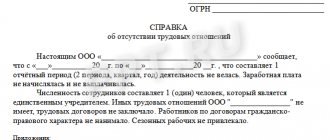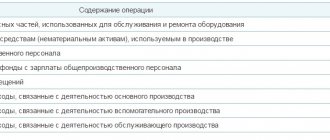Documentation of transactions with inventory items
The document flow system operating in the company is based on a set of unified forms. Their templates must be developed in accordance with the regulatory requirements of the Law of December 6, 2011 No. 402-FZ.
If the law allows the use of arbitrary forms, the business entity draws them up independently and approves them by internal act. Eventually:
- a non-standardized document can be introduced into the document flow by order of the manager;
- the new form can be approved by adding it to one of the annexes to the accounting policy.
Inventory assets are represented by goods, finished products and materials. The set of documents to be drawn up depends on the type of product.
A separate set of documents reflects the following transactions:
- upon receipt of products or raw materials;
- acceptance of goods;
- write-off of valuables;
- reflecting the results of regular monitoring.
| Operation | for materials | for goods | for finished products |
| Receipt of goods and materials | invoices (unified form TORG-12) accounts railway waybills invoices powers of attorney to receive inventory items (forms M-2, M-2a) | invoices for the transfer of finished products (form MX-18) | |
| Acceptance of goods and materials | receipt order (M-4) act of acceptance of materials (M-7) in case of discrepancies between the actual receipt and the invoice data | the act of acceptance of goods (form TORG-1) also fill out the product label (form TORG-11) | log of product receipts (MX-5) data is also entered into warehouse cards (M-17) |
| Internal movement of goods and materials | requirement-invoice for materials (M-11) | invoice for internal movement of goods (TORG-13) | |
| Disposal of inventory items | production order order for issue from a warehouse or limit-fetch card (M-8) when using issue limits invoice for release on the side (M-15) | invoice waybill waybill (f. TORG-12) | invoice waybill waybill (f. TORG-12) invoice for release on the side (M-15) |
| Write-off of inventory items | acts for writing off materials that have become unusable ; acts for identifying shortages | write-off acts (TORG-15, TORG-16) | acts for writing off products that have become unusable ; acts for identifying shortages |
| Any operation | mark on the warehouse registration card (M-17) | mark in the warehouse accounting journal (TORG-18) | mark in the warehouse accounting journal (TORG-18) |
| Availability control, reconciliation with accounting data | statements for accounting of material, production and inventory (MX-19) acts on random checking of the availability of materials (MX-14) reports on the movement of inventory items in storage areas (MX-20, 20a) commodity reports (TORG-29) | ||
Also see “Sample of power of attorney for receiving goods/material assets”.
The procedure for settlements between individual entrepreneurs and restrictions
Legislative acts do not prohibit settlements between individual entrepreneurs and individual entrepreneurs in cash, which means the transfer of banknotes by counterparties. Meanwhile, the system of restrictions affects the amount and purpose of payment.
Money
The main limitation is that the settlement amount for each transaction should not exceed 100,000 rubles. Moreover, if a transaction is made using foreign currency, then in terms of domestic capital, its limit is limited to the same amount (i.e. 100,000 rubles). This rule applies to settlement transactions between:
- Individual entrepreneur and any organization.
- Individual entrepreneur and legal entity representing LLC.
- Making payments between individual entrepreneurs.
Deal
The intended purpose of funds must also be documented by regulations and used within the appropriate framework:
- For remuneration of workers hired under a contract in accordance with the Labor Code of the Russian Federation. Their physical (mental) work must be paid according to tariff rates or salaries.
- Social payments.
- For accountable funds planned to pay for services.
- For insurance compensation.
- Own expenses of individual entrepreneurs outside the scope of business.
- Payments between contractors relating to payment for services and goods.
- Refund of money for low-quality goods and compensation for damage.
- To make bank payments.
Rent
Preparation of accounting correspondence for inventory items
To record in accounting the moment when materials were received from the supplier, the posting is generated by posting a debit turnover on the 10th account.
To reflect transactions with finished products, synthetic account 43 is used. It is active, income is recorded as a debit movement, and expenses are indicated in credit turnover.
The cost of goods and the size of the markup on them are accumulated in the debit of account 41.
| Operation | Dt | CT | Explanation |
| materials received from the supplier (posting) | Dt 10 | Kt 60 | according to incoming materials |
| Dt 19 | Kt 60 | according to the VAT amount on the invoice | |
| Dt 68 | Kt 19 | according to the amount of VAT to be reimbursed | |
| finished products arrived (accounting at actual cost) | Dt 43 | Kt 20 (23, 29) | when accounting for actual cost based on the amount of finished products received |
| finished goods received (accounting cost method) | Dt 43 | Kt 40 | when accounting at book value based on the amount of finished products received |
| Dt 40 | Kt 20 | for the amount of actual cost | |
| Dt 90-2 | Kt 40 | for the amount of discrepancies between the cost and the accounting value (direct or reversing at the end of the month) | |
| goods have arrived from the supplier | Dt 41 | Kt 60 | at the cost of purchasing goods |
| Dt 19 | Kt 60 | according to the VAT amount on the invoice | |
| Dt 68 | Kt 19 | according to the amount of VAT to be reimbursed | |
| Dt 41 | Kt 42 | by markup amounts for trade organizations |
If they reflect the internal movement of valuables, for example, when materials are released into production, the posting is made using analytical subaccounts.
Disposal of working capital in storage may occur as a result of:
- transfer to another division of the company;
- sales to final consumers;
- transportation to the branch structure;
- gratuitous donation to third parties;
- culling.
| Operation | Dt | CT | Explanation |
| materials released into production (posting) | Dt 20 (23.29) | Kt 10 | based on the average cost of this type of materials |
| Dt 20 (23.29) | Kt 10 | when used and FIFO by cost in order from old to new batches in warehouse | |
| Inventory and materials were allocated for administrative and general business expenses | Dt 25 | Kt 10 | by the amount of inventory supplied |
| Dt 26 | Kt 10 | by the amount of issued IBP | |
| Dt 44 | Kt 10 | by the amount of containers and packaging issued for goods sold | |
| goods released to customers | Dt 90 | Kt 41 | when recognizing used revenue based on the amount of goods sold |
| Dt 45 | Kt 41 | until the moment of recognition of sales revenue based on the amount of goods sold | |
| finished products released to customers | Dt 90 | Kt 43 | when recognizing used revenue based on the amount of finished products sold |
| Dt 45 | Kt 43 | until the moment of recognition of revenue from the sale based on the amount of finished product | |
| transferred inventory items to the branch | Dt 79 | Kt 10 (43, 41) | by the amount of shipped separately. division of goods and materials |
In all cases of write-off of materials, postings are generated through crediting account 10 in conjunction with cost accounts. This approach to compiling accounting correspondence is also implemented in relation to goods with finished products, but with the participation of accounts 41 or 43.
The reason for excluding working resources from the balance sheet may be:
- loss of original qualities of products or raw materials;
- damage to material;
- depreciation of the asset;
- recording shortages based on inventory results.
Also see “Inventory of goods and materials”.
Disposal must be confirmed by a set of supporting documentation to establish the need to remove valuables from circulation.
When registering the write-off of goods that have become unusable, transactions are made for the amount indicated in the write-off act. The debit account will always appear as 94.
| Operation | Dt | CT | Explanation |
| write-off of materials (postings) | Dt 94 | Kt 10 | according to the amount from the act |
| write-off of goods that have become unusable (postings) | Dt 94 | Kt 41 | according to the amount from the act |
| write-off of finished products (postings) | Dt 94 | Kt 43 | according to the amount from the act |
Also see “How materials are written off.”
Inventory assets (TMV) are the tangible property of an organization related to working capital. Let's take a closer look at how inventories, transactions and documents are kept in accounting.
The organization paid for the purchase in cash. How to offset VAT and write off expenses?
N.V. OTOCHINA, chief accountant Yu.S. SEMENOVA, expert of the magazine “Glavbukh”
Material provided by the magazine “Glavbukh” No. 21-2003.
The new Federal Law No. 54-FZ “On the use of cash register equipment...” (hereinafter referred to as Law No. 54-FZ) has changed the procedure for processing documents when selling for cash. Now the seller must issue a cash receipt, even if the buyer is a legal entity. When legislators announced this innovation, it seemed that only organizations trading for cash would suffer from it - they actually had a lot of new problems.
However, after a while, the accountants of the purchasing companies also grabbed their heads: the law also added difficulties to them. Namely: it became unclear how the documents should be drawn up so that the “input” VAT could be deducted. Enterprises that, for tax purposes, determine expenses “on payment” are faced with another difficulty. Tax officials refuse to recognize their expenses unless they are supported by a cash receipt.



